People
How ‘Condo King’ Bob Rennie Became the Most Controversial Man in Canada’s Art World
The realtor boasts a collection of around 1,700 artworks by 300 artists—and a very mixed reputation.
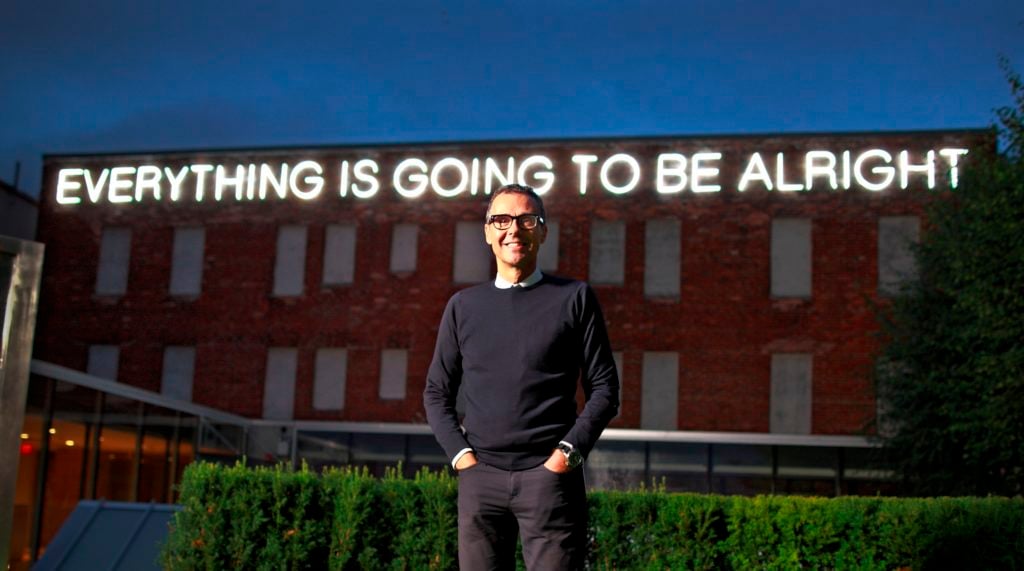
The realtor boasts a collection of around 1,700 artworks by 300 artists—and a very mixed reputation.

Kate Brown

A few doors down from the Rennie Collection in Vancouver, two police cars sit parked at odd angles, blocking an intersection and flashing their lights. Professionals dressed in business casual toting large coffees walk by without turning their heads. For those who live and work here, the sirens and police presence are normal.
This is the city’s notorious Downtown Eastside, where contemporary art collector and “Condo King” Bob Rennie opened a private museum in 2009 and established the headquarters of his real estate marketing enterprise, Rennie Marketing Systems, in 1997.
The area has been home to some of Vancouver’s most vulnerable populations for decades. It has among the highest rates of poverty, drug use, and homelessness in the region—as well as one of the city’s largest artist populations. Down the street from safe injection sites, Rennie’s heritage landmark museum cuts an odd figure.
Some call this gentrification. Rennie calls it balance.

Bob Rennie stands with John Baldessari’s
Camel (Albino) Contemplating Needle (Large), 2013.
Over the past 43 years, Rennie has amassed one of the largest and most prominent collections of contemporary art in Canada. You would be hard-pressed to find someone in the art world there who hasn’t heard of him—or developed a strong opinion about him.
Although art and real estate have long been uneasy bedfellows, he has emerged as a symbol of the ongoing debate over art’s role in urban development. And as an unapologetic provocateur, Rennie has, in some communities, become vehemently disliked.
His collection of 1,700 works by 300 artists includes top examples by Canadian conceptual artists like Rodney Graham and Geoffrey Farmer as well as international names like Lorna Simpson, Louise Lawler, and John Baldessari. He is known for collecting the work of artists in-depth and over a long period of time. An avid collector of Kerry James Marshall since 1999, Rennie will present a solo show drawn from his extensive holdings of the artist next year.
The collector certainly doesn’t shy away from controversial material. He recently acquired the very edition of Piss Christ (Immersions Series)—Andres Serrano’s inflammatory 1987 photograph of a crucifix immersed in the artist’s urine—that had been bashed with a hammer by protesters in Avignon, France, on Palm Sunday in 2011.
“If you can’t sell it, we’re probably interested,” Rennie tells artnet News from his art-filled office, which includes a high-impact installation by American artist Richard Jackson, appropriately titled BOP (Bob’s Office Painting) (2010).

Martin Creed Work No. 851: EVERYTHING IS GOING TO BE ALRIGHT, 2008. Courtesy Rennie Collection.
Earlier this year, Rennie made national headlines when he donated a whopping 197 works from his collection to the National Gallery of Canada. Worth a total of $12 million, it was the single largest donation the museum has ever received. He is also a major player beyond Canadian borders: The former chair of Tate Modern’s north American acquisitions committee, he currently serves on the executive committee of Tate’s international council and sits on the board of trustees at the Art Institute of Chicago.
The esteemed Rennie Collection is housed in Chinatown’s oldest building, which the collector spent around $10 million and four years renovating before it opened in 2009 with a solo exhibition of work by Palestinian, London-based artist Mona Hatoum. Its rooftop is home to an installation by Turner Prize-winning artist Martin Creed—a neon light spelling out EVERYTHING IS GOING TO BE ALRIGHT. It’s a glowing beacon over the neighborhood, albeit a bit parental in tone.
“People argue with me all day long that it’s wrong and that we should keep areas all the same,” Rennie says of his decision to put down roots in the area and launch a slate of development projects. “It doesn’t work. It ghetto-izes.”
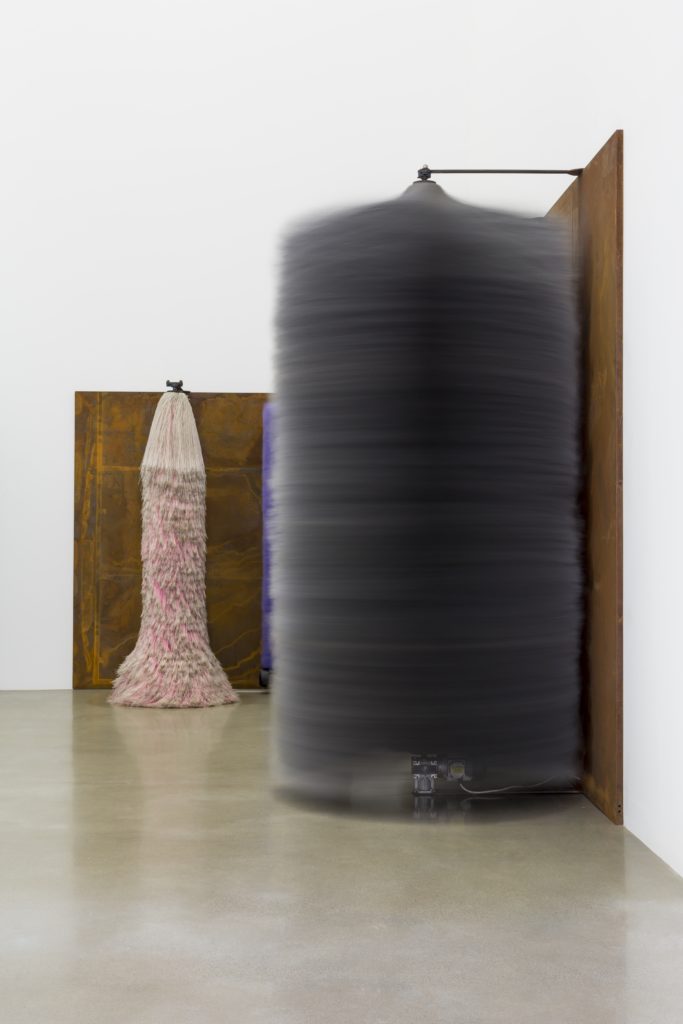
Lara Favaretto’s Coppie Semplici / Simple Couples (2009). Courtesy Rennie Collection.
Rennie has been in the real estate business for almost 40 years. By 1979, he was selling a home per day. In the floors between the exhibition halls, his company continues to expand within the poorest postal code in the country. “We have 82 staff and another 120 real estate agents that come and go and have lunch in the community,” he says.
His development projects have made him one of the faces of Vancouver’s soaring new buildings and rising rents, as well as its displaced artist community. He spearheaded the massive 2010 Olympic Village project, a huge site designed to accommodate some 2,800 athletes, coaches, and officials for the 2010 Winter Olympics. Rennie was also the marketing force behind the Woodwards Building in the Downtown Eastside, which laid the groundwork for an escalating debate over the neighborhood’s gentrification. It doesn’t take much digging to find a rather heated dialogue between Rennie and his opponents in local newspapers and online.

Aerial view of the 2010 Olympic Village. Photo: John Sinal. Image courtesy photographer and Rennie Group.
Here in his office, the sixty-one-year-old collector is surrounded three large works by Marshall, one of the 48 artists he and his longtime partner Carey Fouks collect in-depth. Each of the paintings features a reclining African American woman in bed. To the left of them, an interior window looks onto the serene gallery. On the right, beyond a door you can hear the buzz of Rennie Group’s offices; Marshall’s three women float between.
Rennie brings out his phone to pull up images of a sculpture by Marshall, setting it atop a Rennie Marketing Systems dossier for a condominium development. Wake (2003–ongoing) is a scaled-down sailboat piled with medallions that trace the ancestry of the first 17 slaves ever brought to the the US. Since Rennie acquired the sculpture in 2006, Marshall continues to occasionally deliver more medallions, and a creative dialogue between them is ongoing.
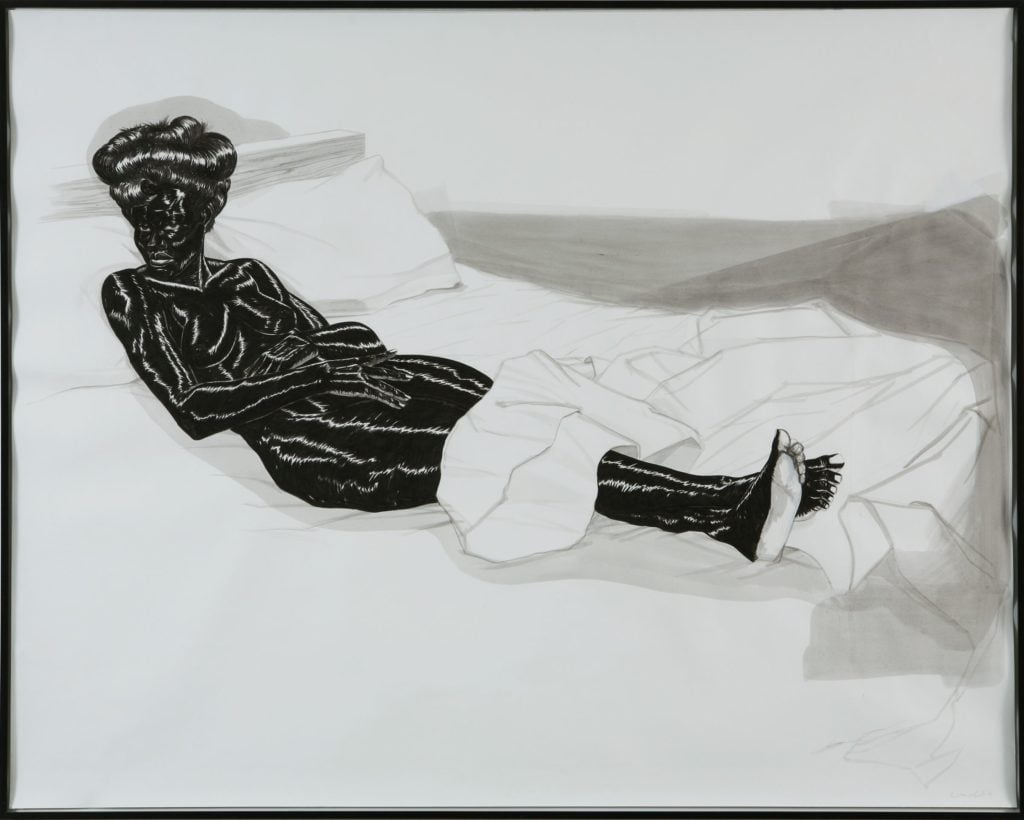
Kerry James Marshall’s Untitled (2006). Courtesy Rennie Collection.
This is Rennie’s signature style. Rather than chase a “trophy” career highlight, he prefers to buy work steadily over the long term in order to capture the full breadth of an artist’s career. He admits that attitude stands in contrast to his professional pursuits. “In the collection, we never want to own a moment,” he says. “In real estate, you might want to own a moment.”
Looming tall behind Rennie is Full Moon by the late Barkley L. Hendricks, another artist who Rennie has emphasized in the collection. Next year, he plans to present a two-person show of work by Hendricks and Lorna Simpson. He spoke to the artist about the show before Hendricks passed away earlier this year.
“We have a disproportionate amount of African American artists,” Rennie says. “When Obama was elected, I said, ‘There’s no need to collect African American artists anymore—that fight was over.’ Super ignorant. By the time he was sworn in on January 20 of 2009… I knew the fight was still going to be there and I thought, ‘Okay, my collection is for a reason.’”
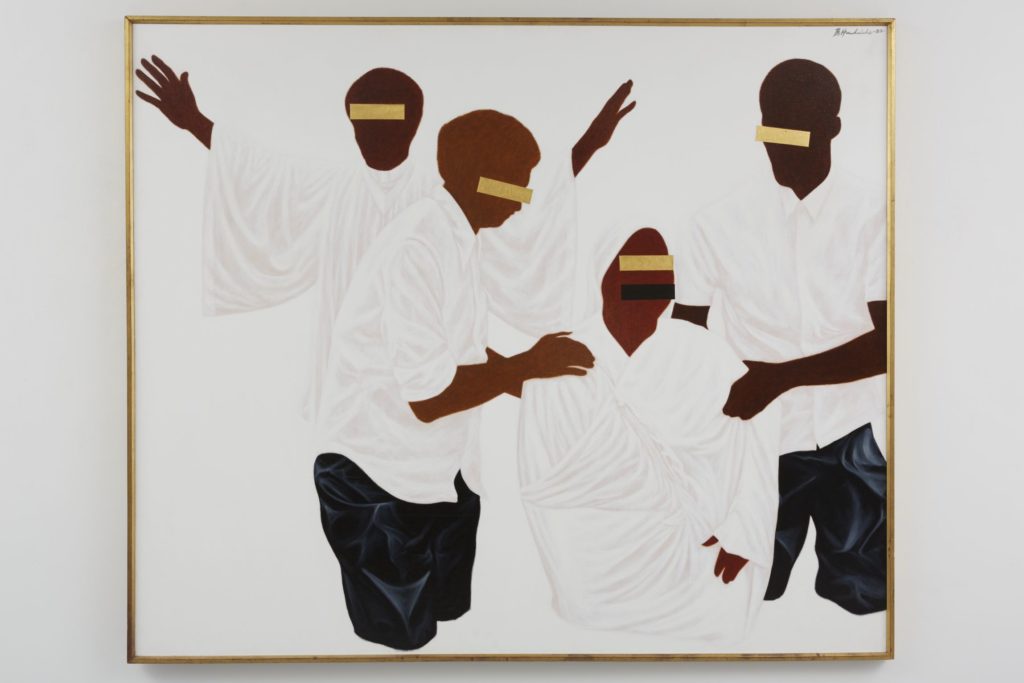
Barkley Hendricks’s Full Moon (1982). Courtesy Rennie Collection.
Rennie’s Utopian attitude toward collecting is summed up in the first work he ever bought. In 1974, he purchased a Norman Rockwell print of a young couple sitting on a globe, cutely titled On Top of the World. Since then, he has developed a taste for art that deals with identity, politics, and social issues. When asked what he thinks of the recent firestorm over Dana Schutz’s painting of Emmett Till in the recent Whitney Biennial, Rennie replies, “I thought we should own it.” (Schutz plans never to sell the work.)
The collector seems to have a particular penchant for acquiring art on the front lines of controversy, if only to trace how the public’s attitude can shift over time. “With anything we buy, I am very interested in how it will be addressed 25 to 50 years from now, not just today,” Rennie explains. “Then you can look back and see which works were important.”
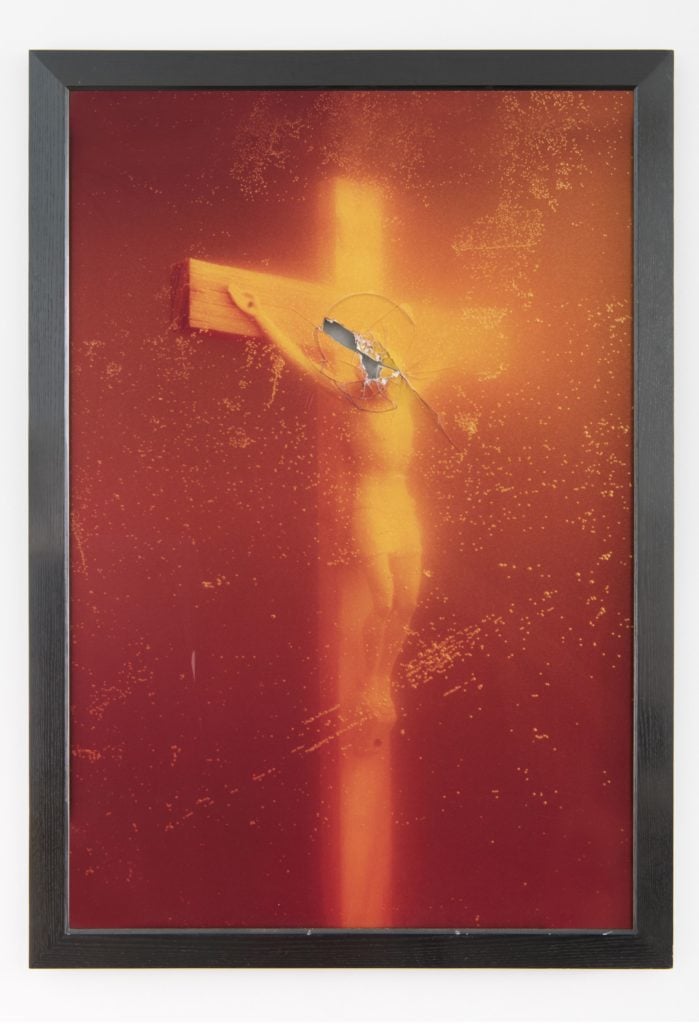
Andres Serrano’s Piss Christ (Immersions Series), 1987. Courtesy Rennie Collection.
He casually mentions that he recently bought and archived several issues of the recent Economist with an illustration of President Trump shouting through a Ku Klux Klan hood on the cover. “The way we look at Trump is super narrow,” he says. “Let’s see 25 from now what this monster really meant.”
In light of the recent spate of natural disasters, Rennie is also building a collection of art related to the environment. “I see Trump leave the Paris Accords and I see what happened in Houston. Is nobody listening? I think that we should slowly put that together so that it can be measured 25 years from now.”
One wonders if Rennie thinks in similar terms about his own controversial legacy. “If they’re not complaining, I am not challenging the system enough,” he says. His goal, he explains, is to make sure that art that deals with what he considers the most important issues of the day—whether it’s African American rights, homelessness, or migratory displacement—are preserved for posterity and reexamination.
“Our fight isn’t the fight to take it on or to change it, ours is the fight to understand that these conditions exist,” he says. “I’m trying to help solve the problem from 30,000 feet.”
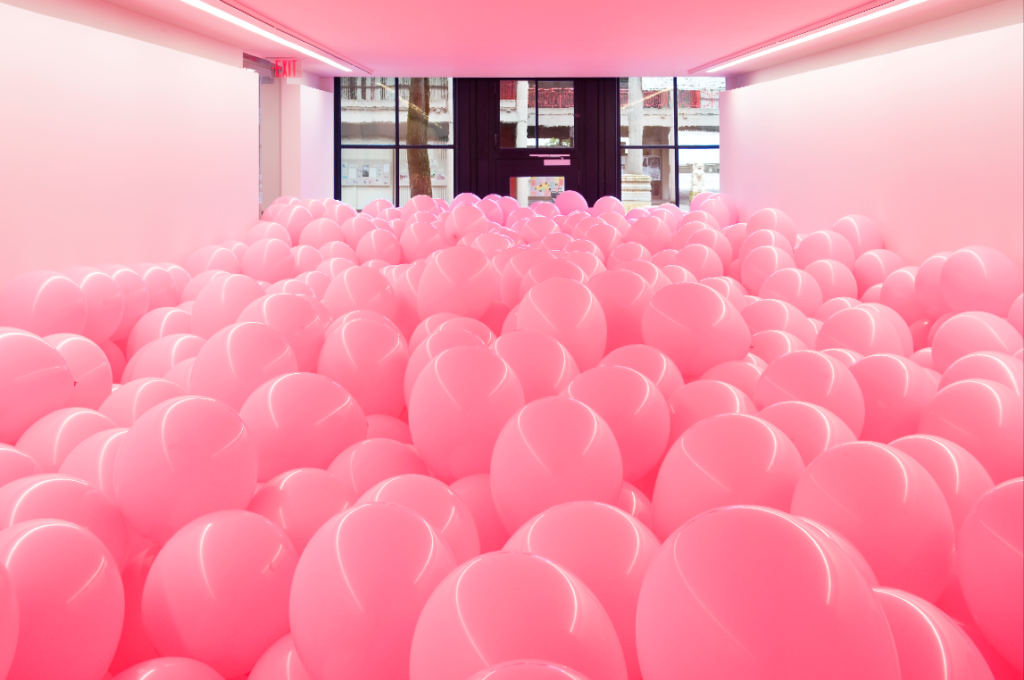
Martin Creed Work No. 329, 2004. Courtesy Rennie Collection.
Rennie’s strong opinions extend beyond his own collection and company. And they have put him at odds with many in the Vancouver art community. He has been a vocal opponent to the Vancouver Art Gallery’s lavish, $350 million expansion designed by Herzog & de Meuron. The space, due to open in 2020, will be built on a new site downtown.
The realtor advocated for a very different plan. “Arts and culture has a hard time attracting the big dollars,” he says. “My suggestion was that the city should sell that piece of land at today’s value—a couple hundred million dollars—give the money to the Vancouver Art Gallery, and let them stay on their old site and not have to drain the shallow philanthropic pool here, our government and taxpayers’ money.”

Herzog & de Meuron design for the new Vancouver Art Gallery. Courtesy Herzog & de Meuron.
He has been pushing the point for a few years now, and a person like Rennie gets his voice heard. In lieu of the new building, he has advocated for a decentralized museum concept: multiple sites around the city that each focus on a different genre or artistic period.
The dispute’s narrative boiled down to Rennie versus the Vancouver Art Gallery’s director Kathleen Bartels, and it was not friendly. “How original: a half a billion dollar museum,” he says, “I think we’ve passed the starchitecture age and it should be about the contents, not the box.” (A representative for the Vancouver Art Gallery declined to comment for this story.)
In the end, it’s looking like a battle he will lose or has lost already. But he has angered many along the way, including local artists. Some have wondered about his true intentions. After all, a multi-site concept could mean more individual neighborhoods to jazz up with tourists, cafes, hotels, higher rents—and, of course, condos.
“There are few, if any, reasons not to support the improvement of conditions for the arts in Vancouver. If we can afford a new museum, we ought to have it,” artist Jeff Wall tells artnet News in an email. “Bob has worked hard to reduce the effectiveness of the campaign to find out whether or not we can afford it. He never made it clear what his reasons are, but all through this process he has kept up a well-known petulant personal vendetta against the director, Kathleen Bartels.”
Indeed, Rennie is not a quiet, behind-the-scenes philanthropist. He is the kind who rolls up his sleeves and then expects reciprocity. A large donor to the recently-in-power Liberal Party, he tells artnet News that he cut a deal in 2013 to get $113 million for the Emily Carr University, British Columbia’s only dedicated art school, of which he is also a longtime supporter.
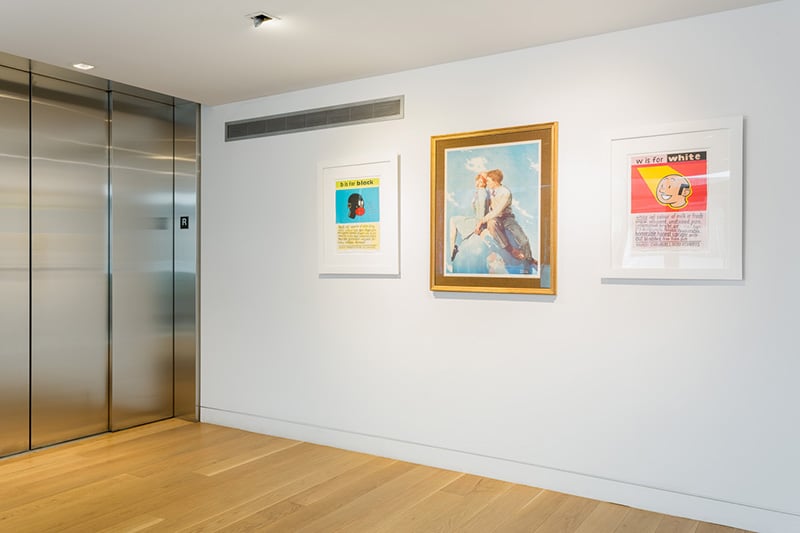
Anton Kannemeyer, B is for Black, 2007; Norman Rockwell, On Top of the World, 1933; Anton Kannemeyer, W is for White, 2007. Courtesy Rennie Collection
He also establishes close relationships with artists he collects. “His support and generosity to the artist feels like family and he’s never shied away from an artist’s dream project no matter how crazy or difficult,” painter Andrew Dadson says. “It is not just about the artwork themselves, it’s that you can see he truly cares about the artist.”
But these relationships may sour. A source in the Vancouver art community says: “Rennie abuses the artists he collects, and I think it is a sign of a very weak art system that he is still permitted to buy work. He is a skilled salesperson, and he uses supply and demand and large holdings to his advantage. It is a very demeaning carrot and stick approach.”
Sources say that Rennie has deaccessioned work by artists who have disappointed or angered him for low prices. He is said to have sold a work by the Canadian artist Judy Radul, allegedly as retribution for highly critical blog posts by Michael Turner, with whom she has shared a home since the 1990s. The art-world source says this is an recurring behavior of the collector, who has “a habit of collecting artists in-depth and then using his holdings as a means of holding control over the artists.”
In fact, Radul’s work Describe Video was an unlikely presence at a local auction house, where it showed up for sale in 2013. It is her only auction record on artnet’s Price Database; the video sold for $2,874, well below its $4,900 low estimate.
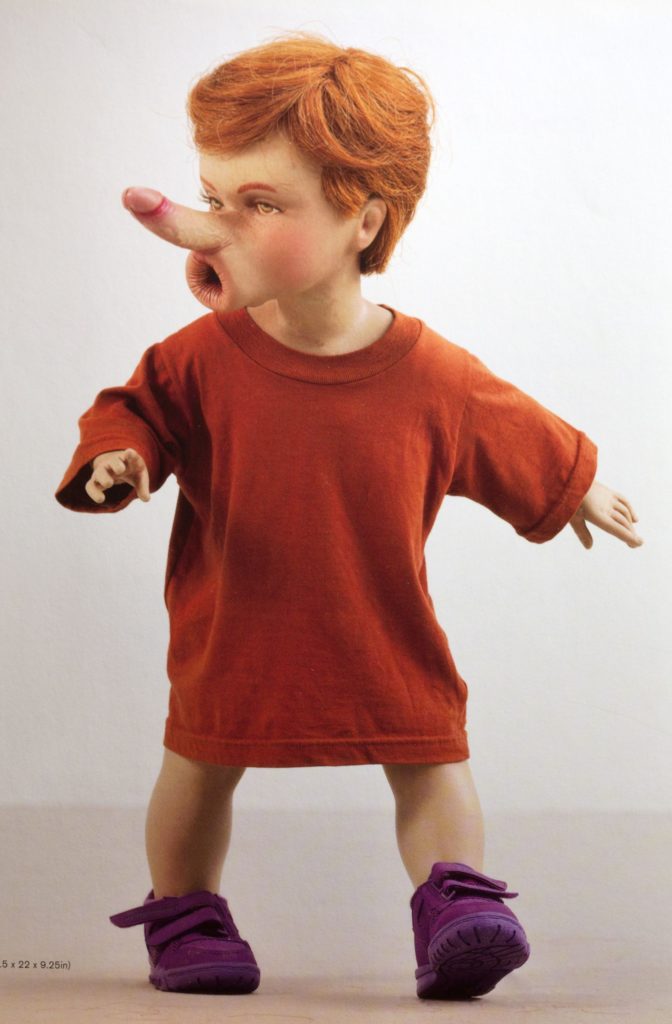
Jake & Dinos Chapman, Fuckface,1994. Courtesy Rennie Collection.
Rennie’s response to these claims could not be more subdued, “As I get older, I now understand that there is something wonderful and special about the myths and about being misinterpreted in your hometown.”
With a Rennie-branded to-go coffee cup in one hand and a ceaselessly ringing cell phone in the other, he continues to ruminate on the artists and the city he has helped build—and the art that informs his own worldview. He goes on to describe a favorite work of his, Dinos and Jake Chapman’s Fuck Face.
“It irritates people so much,” he says. “It creates a discussion. It’s a penis nose, an asshole mouth. People just hate it and I’m forced to defend it.”
With an appetite for playing defense, he seems at peace with his own position as a local irritant. Maybe in 25 years, his true legacy, like that of the artists he collects, will finally become clear.